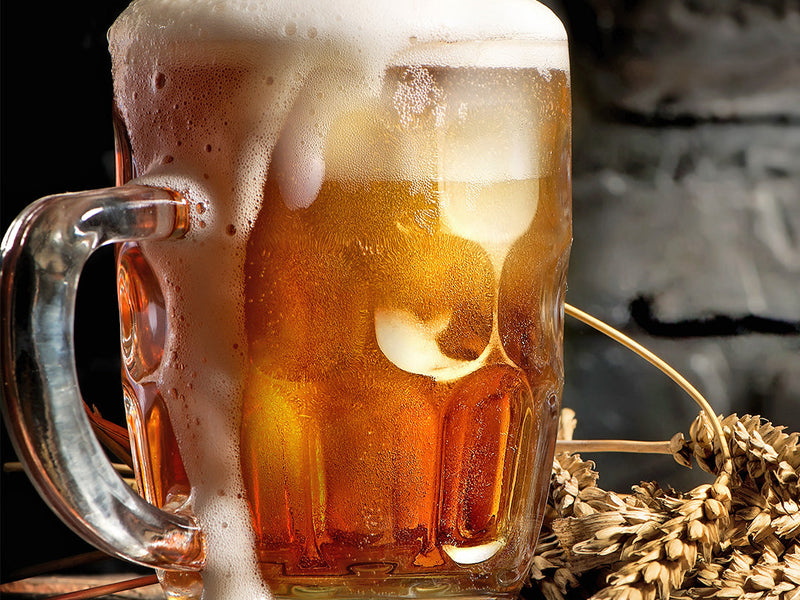No Barley, No Beer! The Role of Barley in Making Beer

Webster's dictionary defines beer as an alcoholic beverage. It is made from malted cereal grain, usually barley. It is flavored with hops and usually has an alcohol content of less than 5%. While many of us may be familiar with beer as a beverage with low, or even no, alcohol, we may not be as familiar with the process of making beer and the role of barley in this process.
It is possible that humans started making beer tens of thousands of years ago, or even 100,000 years ago, based on archeological evidence of grain processing through stone tools or chewing the grain which adds salivary enzymes that convert starches to sugar. After the fermentation process is complete, the beer is filtered or spun to remove the yeast cells. Some beers are then heated to extend their shelf life, while others are left to age in order to enhance their taste.
In current times, most of the world’s barley harvest is used for beer production. In the United States, the largest market for barley used to be animal feed, but according to the USDA’s Economic Research Service, the animal feed market has been replaced by the food, alcohol, and industrial use of barley (mostly made up of malting and brewing) which now makes up for nearly 90 percent of barley use in the United States. This is up from 30 percent in market year 1985-1986.
Why Barley?
Different areas of the world used different kinds of grains to make beer including rice, millet, corn, sorghum, and of course, barley. Different grains produce different flavors in beer.
Why is barley the main grain used in brewing western-style beers? The short answer is because the barley seed is layered, specifically the tiny sliver of seed tissue called the aleurone layer. The aleurone layer contains a reserve of enzymes that are released when germination starts.
These enzymes begin to break down the endosperm boundary of the barley seed which exposes the starch granules in the endosperm to the aleurone enzymes that break them down into sugars. The starch granules are primarily broken down into maltose, hence the term “malting” for the part of the beer-making process for getting the sugars out of the barley seed by starting germination.
Despite the fact that other grains also have an aleurone layer in their seeds, they do not compare to barley’s capacity to break open the endosperm and turn starch into sugar. This sugar is the fermentable sugar that is used to brew beer.
The Beer-Making Process
The first step in brewing beer is turning grain into fermentable sugar. As previously mentioned, this process is called malting and requires skill.
To complete the malting process, barley grains are soaked in water until they germinate and then dried (in a kiln, for example) which are then cracked to expose the germinated seed (also known as “grist”). The germinated, dried barley is known as “malt”. The color and flavor of a grain is determined by the length of time and temperature at which it was dried.
Once the malt has been processed, it is soaked in warm water to activate enzymes in a process called “mashing”. Through mashing, the starches in the barley are converted to simple sugars and filtered. Following the filtration process, a sweet liquor, or “wort”, is left which is a fermentable, sugar-laden liquid.
The wort is then boiled with hops which adds flavor and aroma to the beer and acts a preservative. Once this mixture cools, special strains of yeast are added to start the process of fermentation. Fermentation is the process of converting sugar to alcohol and, depending on the type of yeast and the type of beer desired, can take two to ten days at a temperature between 40 and 70 degrees Fahrenheit.
Following the fermentation process, the beer is filtered or spun to separate out the yeast cells, and some beers are pasteurized to give it a long shelf life and others are aged to promote the best flavor.
Next time you are enjoying a glass of beer, take a moment to appreciate the complex role barley played in the process of making it. Without barley, beer wouldn’t be the same!
